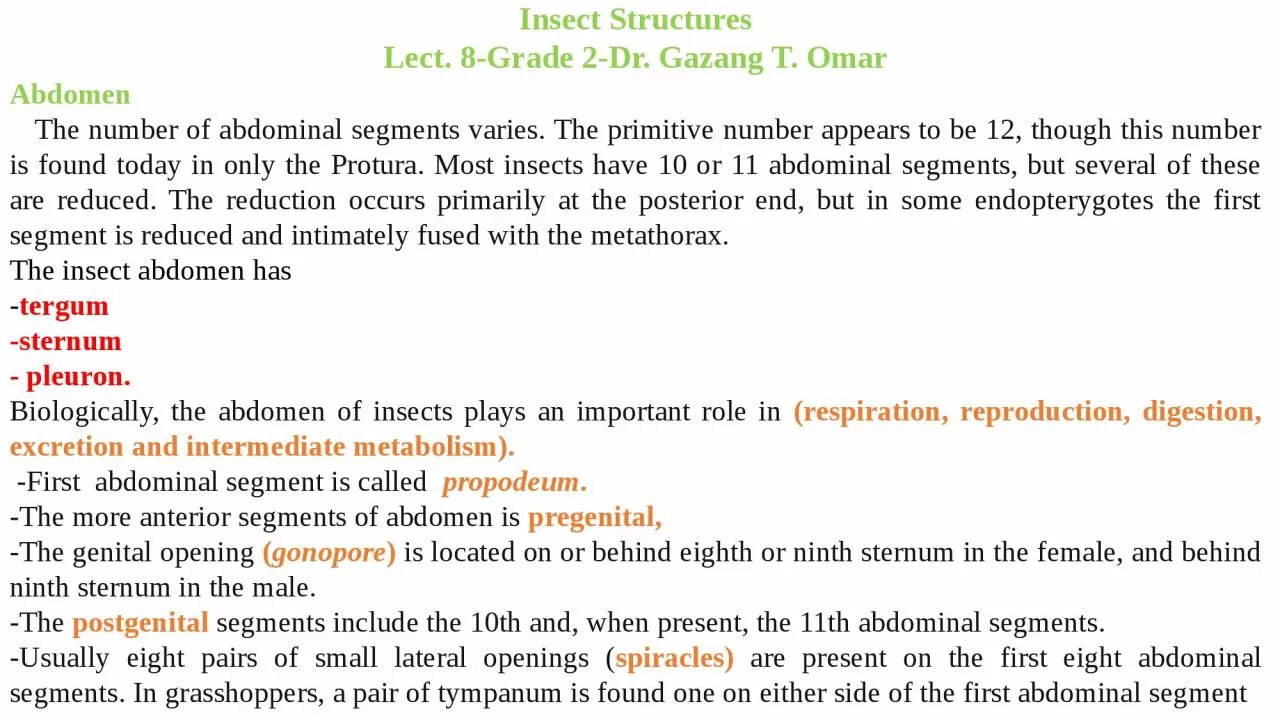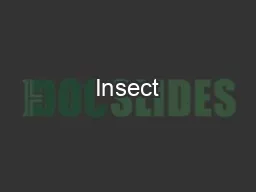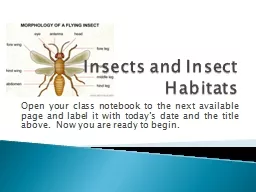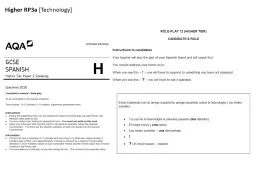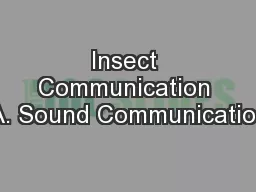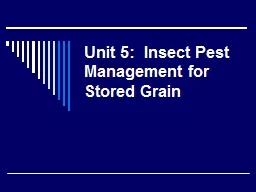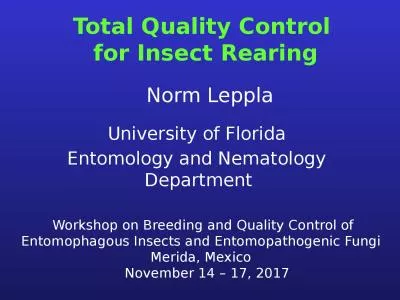PPT-Insect Structures Lect. 8-Grade 2-Dr.
Author : wang | Published Date : 2023-10-29
Gazang T Omar Abdomen The number of abdominal segments varies The primitive number appears to be 12 though this number is found today in only the Protura Most
Presentation Embed Code
Download Presentation
Download Presentation The PPT/PDF document "Insect Structures Lect. 8-Grade 2-Dr." is the property of its rightful owner. Permission is granted to download and print the materials on this website for personal, non-commercial use only, and to display it on your personal computer provided you do not modify the materials and that you retain all copyright notices contained in the materials. By downloading content from our website, you accept the terms of this agreement.
Insect Structures Lect. 8-Grade 2-Dr.: Transcript
Download Rules Of Document
"Insect Structures Lect. 8-Grade 2-Dr."The content belongs to its owner. You may download and print it for personal use, without modification, and keep all copyright notices. By downloading, you agree to these terms.
Related Documents

